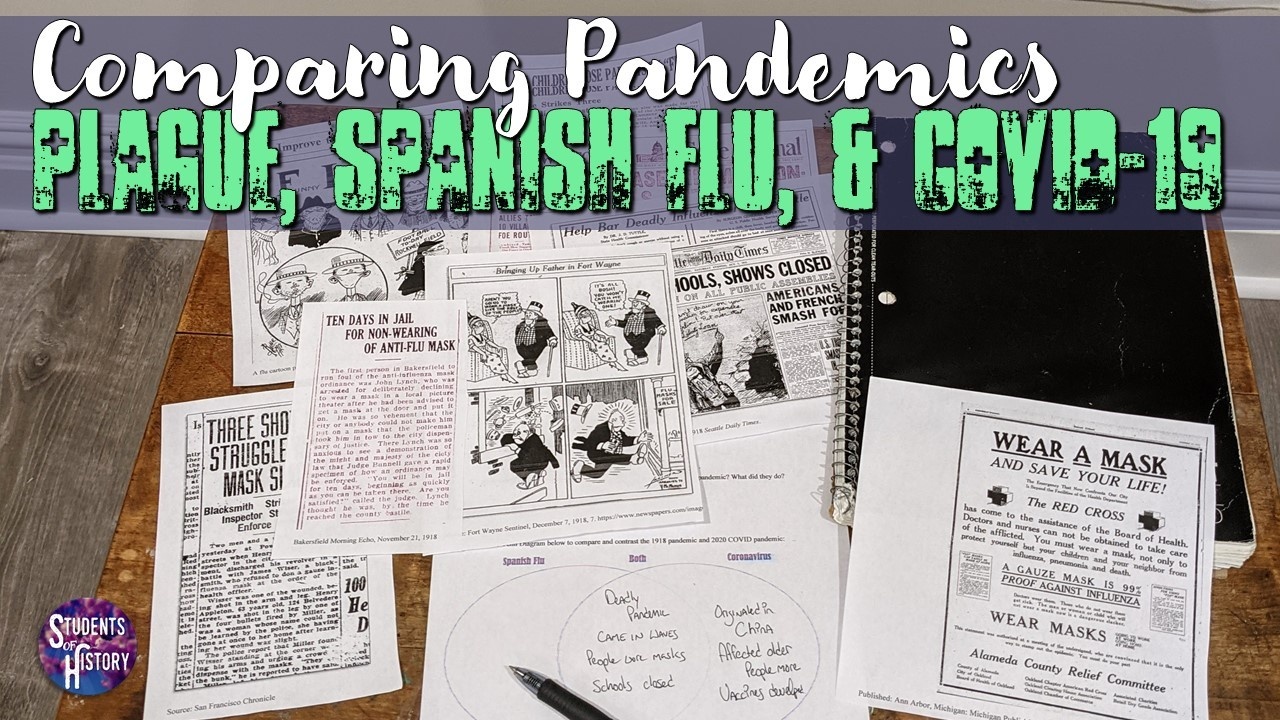Comparing Pandemics Lesson Plans: COVID, Plague, and the Spanish Flu

If you're teaching social studies through the COVID-19 pandemic, you've likely tried to connect this moment in history with events in the past from your curriculum.
Since I have both World History and US History, I wanted separate lessons that would allow students to see connections to history from what they have lived through.
To do this, I developed these two lessons. The first one is for US History and allows kids to analyze primary sources from the 1918 "Spanish Flu" pandemic. The second one for World History has students analyzing a primary source from the plague.
US History - The Spanish Flu of 1918 and Coronavirus
The 1918 Spanish Flu was one of the deadliest pandemics of all time. It affected nearly 1/3 of the entire world and killed millions.
It didn't develop in Spain, but earned the name because other nations censored any news of widespread sickness because of World War 1. Spain was neutral in the war and one of the few countries that accurately reported how deadly the pandemic was.
My 1918 Spanish Flu lesson features a complete lesson plan along with 24 primary source images, news clippings, cartoons, and placards for students to analyze.
Students start off by reading a survivor's account of the pandemic and discussing how that connects to the coronavirus.
Next, students use a worksheet (or Google Doc) to analyze the sources. This can be done in a number of ways depending on what's best for your classroom set-up. It might be in groups, at stations around the room, or digitally using the Google Drive options.
After students look at all the documents, they move on to a set of analysis questions and complete a Venn Diagram comparing the 1918 pandemic to the coronavirus.
You can download the lesson individually here or through a US History subscription. It can also be accessed as part of my complete World War 1 Unit Plan Bundle. That includes lessons and resources for every day of a unit on WW1 and works for both US and World History!
World History: Plague: Rules for Slowing the Spread
The Bubonic Plague or Black Death is infamous as the most deadly pandemic of all time. Outbreaks came over a long period and caused the deaths of up to 75–200 million people.
My Black Death lesson plan is a great resource if you're teaching about the European Middle Ages in your World History classroom.
This activity is based on a fantastic primary source (translated and slightly edited) from a Sardinian doctor who developed a long list of rules to slow the spread of the Bubonic Plague in his community.
Students start off by reading an intro on the plague and background on the doctor who wrote his “Ectypa Pestilentis Status Algheriae Sardiniae” (Instructions on the Alghero, Sardinia, Plague Epidemic).
The list features many familiar sounding rules like quarantining, social distancing, and banning large gatherings so students can make a lot of connections. There's also some typically Middles Ages-type rules that students can identify.
As kids review the rules (which can be done in groups, pairs, or individually), they decide which they feel are most effective and then compare these strategies to ones from today.
There's an editable Google Doc version if you need to make any changes for your students or want to use it digitally for online learning.
You can download this lesson individually here or through a complete World History subscription. It can also be accessed as part of my European Middle Ages Unit Plan.
Thank you so much for checking them out and best of luck!


Want to try some lessons for free?
Enter your email to download over 30 pages of free, engaging social studies resources!
Don't worry, your information is never shared.